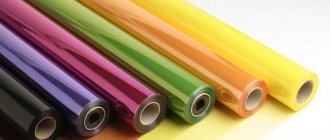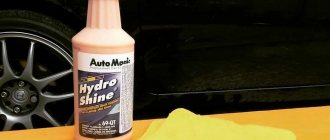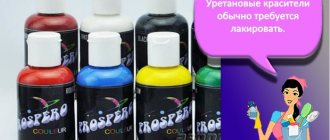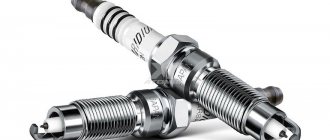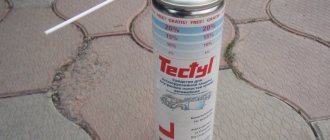Silicone grease is a light-colored synthetic material made from silicone oil.
Silicone lubricants are characterized by a whole range of remarkable performance properties, thanks to which they have gained wide popularity in industrial and domestic conditions.
These lubricants are especially loved by car enthusiasts. The list below shows popular plastic, liquid and aerosol silicone-based materials and also ranks them according to their range of benefits.
Popular silicone lubricants
Silicone lubricants EFELE
Silicone lubricants EFELE
1
place
0
/100
RATING
0
100
The first place in our review is shared by two silicone lubricants - EFELE UNI-S Spray and EFELE SO-780 Spray. According to reviews from Internet users, they have an optimal price-quality ratio. The main difference between these lubricants is the purity of the silicone.
EFELE UNI-S Spray lubricant is 100% highly purified silicone. It does not contain solvents, therefore it is inert towards plastic and rubber parts and does not change their structure and color.
EFELE UNI-S Spray is the only lubricant approved by Rospotrebnadzor for use in the food and pharmaceutical industries. Its safety for human health is confirmed by an official expert opinion.
The material’s compatibility with metals, elastomers, plastics, and leather allows it to be used in car maintenance and for solving household and industrial problems. The lubricant is used sparingly and covers much more surface area than other silicone-based aerosols.
EFELE UNI-S Spray forms a transparent, odorless film on parts with excellent lubricating, release, antistatic, water-repellent and dielectric properties.
Buy on Ozon
EFELE SO-780 Spray is a multi-purpose silicone lubricant, the price of which is much lower. It effectively eliminates creaking and jamming, prevents jamming of mechanisms, restores the appearance and elasticity of rubber seals, and prevents them from cracking and freezing.
The lubricant operates in a wide temperature range (-40...+200 °C) and demonstrates excellent water resistance.
Buy on Ozon
Liqui Moly Silicon-Spray
2
place
Liqui Moly Silicon-Spray
0
/100
RATING
0
100
Silicone oil spray prevents doors from freezing, improves the sliding of glass and hatches, prevents squeaks, repels water, and can be used to service lightly loaded parts.
Unfortunately, the manufacturer does not indicate the composition of the lubricant. There is only information that it does not contain petroleum components. However, there is still some smell.
Liqui Moly Silicon-Spray is a silicone material with standard properties, but a higher price than the previous composition.
Buy on Ozon
WD-40 Specialist
3
place
WD-40 Specialist
0
/100
RATING
0
100
Quick-drying silicone lubricant in an aerosol can for metal, plastic, wood, rubber surfaces.
A relatively new product that went on sale just a few years ago.
Prevents sticking, protects against moisture and prevents its penetration into mechanisms. The composition has an aerosol package equipped with a tube nozzle - this is one of the advantages of the lubricant, allowing it to take third place.
Buy on Ozon
Silicot
4
place
Silicot
0
/100
RATING
0
100
Silicone plastic universal lubricant produced by VMPAvto with fluoroplastic (PTFE) filler.
Like many other silicone-based compounds, the lubricant is transparent, so it does not get dirty. It protects metal, polymer and rubber parts from rust, wear and aging, does not evaporate, and is safe for human health.
This lubricant is quite expensive, especially considering the small packaging volume.
Buy on Ozon
Eltrans
5
place
Eltrans
0
/100
RATING
0
100
Silicone oil for lubricating metal parts and maintaining rubber seals.
The composition is colorless and penetrates well into hard-to-reach places.
Supplied in 70 ml plastic oil bottles with an elongated spout. A relatively inexpensive lubricant, but without particularly remarkable properties.
Buy on Ozon
PMS-100
6
place
PMS-100
0
/100
RATING
0
100
Colorless transparent polymethylsiloxane oil with a kinematic viscosity of 100 mm/s.
Silicone oils with this name are produced by various companies. However, regardless of the brand, the liquid has the same composition and properties: anti-corrosion, electrical insulation, defoaming.
The lubricant is intended for lightly loaded parts in sliding and rolling units of office equipment, household and other appliances. Forms separating films on metal, plastic and rubber surfaces and is used for processing rubber seals, high-voltage wires, and mold surfaces.
The composition is quite universal, but the packaging is not very convenient, and the resource is small.
Buy on Ozon
Rating TOP 7 best silicone lubricants
Having analyzed the market for goods of this type, we have compiled a rating:
- SKF LGWA 2.
- Motul Tech Grease.
- Liqui Moly LM 50.
- Efele UNI-S Spray.
- WD-40 Specialist.
- Molykote Separator Spray.
- OKS 1110.
Let's take a closer look at each model.
SKF LGWA 2
SKF LGWA 2 is a high-quality grease based on mineral oil and lithium complex soap with extreme pressure additives. LGWA 2 is recommended for use in industrial and automotive applications where loads and temperatures exceed the temperature range of multi-purpose lubricants.
| Color | amber |
| Operating temperatures | from -30 to +140°С |
| Volume | 60-380 ml |
| Oil type | mineral |
Price: from 699 to 920 rubles.
- wide temperature range (from -30 to +140°C);
- high quality (has a GOLD+ certificate);
- containers of various volumes (from 60 to 380 ml).
- low prevalence outside a specialized retail chain.
The quality of the SKF LGWA 2 product is something you can trust even with your eyes closed. The lubricant is not only made of very high quality, but also costs ridiculous money. It performs excellently in its work and deserves great recognition from consumers.
SKF LGWA 2
Motul Tech Grease
Motul Tech Grease is a high-tech multi-functional grease.
Used for lubricating various joints, joints, hinges, rolling bearings, hub bearings, ball joints, cables. Used in any equipment operating under normal or increased loads: cars, motorcycles, water equipment, construction equipment, agricultural equipment, stationary equipment.
| Temperature range | from -30 to +200°С |
| Oil type | mineral |
| Volume | 100-350 ml |
| Color | green |
Price: from 350 to 570 rubles.
- excellent temperature resistance (up to +200°C);
- mineral base;
- multifunctionality (used to lubricate joints, bearings, hinges, etc.).
- not found.
It just so happens that in my work I have to use the entire line of Motul lubricants. I can't say anything bad about this product. The lubricant really does its job well and is also resistant to moisture.
Motul Tech Grease
Liqui Moly LM 50
This lubricant is packaged in 0.4 kg, but if larger-scale applications are needed, then packages up to 25 kg are available. The lubricant not only holds well in friction pairs, but is also resistant to washout. Considering the quite affordable price, it can be safely called the best lubricant for bearings (hubs, etc.). LM50 is also guaranteed to retain its properties for many months and even years.
| Color | Navy blue |
| Operating temperatures | from -30 to +160°С |
| Oil type | mineral |
| Volume | 400-25000 mm |
Price: from 670 to 999 rubles.
- high efficiency (maintained in friction pairs);
- resistance to washout;
- resistance to air currents.
- low temperature resistance (only up to +160°C).
A good lubricant, suitable for people who don’t have a lot of money, but are hungry for something interesting and of high quality. The only drawback is that at temperatures above +150°C the lubricant begins to change color and blur. But if you don’t expose it to these loads, then it’s completely fine.
Liqui Moly LM 50
Efele UNI-S Spray
UNI-S Spray is 100% highly purified silicone at the price of regular silicone grease. Covers more surface area than other silicone based aerosol lubricants. Forms a transparent, odorless film with lubricating, releasing, antistatic, protective and water-repellent properties superior to those of simple silicone lubricants.
| Operating temperatures | from -50 to +200°С |
| Volume | 210-520 ml |
| Oil type | pneumatic cylinder |
| Color | transparent |
Price: from 302 to 830 rubles.
- wide temperature range (from -50 to +200°C);
- no odor;
- antistatic and protective properties.
- not found.
This product fully complies with the declared parameters and, in addition, does not have any harmful substances in its composition, unpleasant odor or color. People choose this lubricant because of its affordable price and incredible quality.
Efele UNI-S Spray
WD-40 Specialist
WD-40 SPECIALIST is a new line of products under the WD-40 brand. This product was specially designed for those who value a high-quality and professional approach to their work! “Smart Straw” is a unique innovative technology, thanks to which the product can be used anywhere. This lubricant quickly and effectively removes dust, dirt, carbon deposits, etc.
| Temperature range | from -35 to +200°С |
| Color | white |
| Volume | 200-500 ml |
| Oil type | mineral |
Price: from 899 to 1,450 rubles.
- deep penetration (impregnation 1-3 mm);
- effective removal of dust, dirt, etc.;
- brand awareness (WD-40).
- not detected.
WD-40 is a fairly well-known brand among users of this product. To be honest, prices for such liquid start at 800 rubles, which makes the product expensive, but does not negate the high quality. I’ve been using it for three years now and recommend it to everyone I know. I also recommend you to buy.
WD-40 Specialist
Molykote Separator Spray
Molykote Separator Spray is a silicone oil produced in aerosol packaging (400 ml). This material is used as a release agent, prevents deformation and destruction of rubber parts, and also eliminates frequent re-lubrication. The tube attachment allows you to apply material to hard-to-reach areas and maintain the treadmill belt without loosening or adjusting.
| Volume | 400 ml |
| Color | transparent |
| Operating temperatures | from -40 to +200°С |
| Oil type | methyl silicone |
Price: from 570 to 830 rubles.
- durable can with a thick body (about 3 mm);
- sufficient volume for several applications (400 ml for approximately 5-8 applications);
- neutral smell.
- not found.
Quite an interesting model in the mid-price market segment. The investment is fully justified and fulfills all its functions. Separately, I would like to note the pleasant smell, unlike any other, but very captivating.
Molykote Separator Spray
OKS 1110
OKS 1110 is a food-grade silicone lubricant that can be used in components of kitchen appliances, assemblies with plastic gears, including in cars. Softens silicone-based plastics, such as silicone rubber. Provides long-term stability without drying out, hardening or bleeding, and is resistant to operating media such as cold and hot water and acetone, ethanol, ethylene glycol. But it cannot be used on sliding areas exposed to pure oxygen.
| Oil type | polydimethylsiloxane |
| Operating temperatures | from -40 to +204°С |
| Volume | 30-520 ml |
| Color | transparent |
Price: from 330 to 950 rubles.
- resistant to changes in water temperature (cold and hot);
- makes silicone-based plastics softer;
- easy to apply (squeezed from a tube or scooped from a jar).
- Do not use in sliding areas exposed to clean air.
I once tried to lubricate the food processor with this grease when it squeaked. And you know - it really helped! In principle, a small tube (about 50 ml) is enough for several uses, so I do not recommend buying large volumes. Overall, I'm more than pleased with this lubricant.
OKS 1110
What types of silicone lubricants are there?
Based on their state of aggregation, the following types of silicone lubricants are distinguished.
Aerosols
These materials differ from other types in that at the time of application they are a suspension of tiny oil particles in a carrier gas.
Solvents are sometimes added to aerosol materials to reduce viscosity. In this case, at the time of application the material has good penetrating ability, and after the solvent evaporates it becomes thicker.
Aerosol lubricants are the most popular form of silicone lubricants. They are easy and convenient to apply. They do not require additional tools for application.
Aerosol cans are constant attributes that about half of all car owners constantly carry with them.
However, this type of material also has disadvantages. When applied, they form a conical “torch”. As a result, the lubricant gets not only into the treated areas, but also into the adjacent areas. In addition, aerosol cans have a rather fragile design, so they must be protected from thermal and mechanical influences.
Liquids
Such materials are essentially pure silicone oil. Depending on the purpose of the product, they are manufactured with different viscosities.
They are produced in vials, vials, bottles, cans, canisters and larger containers. Sometimes bottles are equipped with special applicators, which, when used, are automatically saturated with the lubricant contained in the package. The lubricant is applied to the surface and rubbed with an applicator.
Another method of application is through an oil can. Many bottles have elastic packaging and are equipped with a thin, elongated spout that allows you to accurately dose the lubricant and apply it to hard-to-reach places.
Lubricants can also be applied in the standard way - using a brush or sponge.
Plastic compositions
Silicone greases, unlike the first two types, have a thick consistency. Their main advantage is that they do not drain from the surface.
Such materials are more difficult to distribute evenly, especially on bases with complex terrain. However, the layer formed by greases is thicker and stronger and can withstand higher loads.
The above classification is quite arbitrary, since many of the materials are difficult to classify into any specific category.
How to remove silicone grease
Many people are interested in the question - how to wash off silicone grease ? The answer depends on its composition and manufacturer. If for some reason grease gets on glass, clothing or another surface in an undesirable place, then the first thing you should do is not try to wipe it off . You will only make things worse by making the grease stain bigger.
Read the composition of the lubricant and select a solvent that can neutralize it. We present for you several methods of neutralization:
Products for removing silicone grease
- If the composition is based on an acid base, then the easiest way to remove it is with vinegar. To do this, you need to take a 70% acetic acid solution and moisten the area of contamination with it. After this, wait about 30 minutes. Next, he should calmly wipe off with a dry cloth.
- If the lubricant is made with alcohol, it must also be neutralized with alcohol solutions. To do this, you can use medical, denatured or technical alcohol. As a last resort, vodka. Using a rag soaked in alcohol, scrub the silicone until it turns into balls.
- If the lubricant is based on amines, amides or oximes, then it can be wiped off with gasoline, white spirit or alcohol solvent. Using a dampened rag, wet the stained area and leave it for 30 minutes. After that, try to wipe it off. If it doesn’t work the first time, try moistening it again and leaving it for another 30…40 minutes. Then repeat the operation.
It is advisable to work with acetic acid, acetone and solvents in a respirator and rubber gloves!
Acetone is often used to remove silicone, but it is not suitable for all compounds. In addition, when working with it, be careful not to damage the paint of your car's body (especially for paint applied from a spray can).
In addition, to remove silicone grease, you can try using a glass cleaner (for example, “Mr. Muscle”), or a liquid containing ammonia or ethyl alcohol. Also in the auto chemical store you will find the so-called “anti-silicone”. However, it is not suitable for all types of lubricants. But the best option would be to go to a car wash and tell the employees what product you used. They will select the “chemistry” and remove the dirt with a suitable car shampoo.
Composition and properties
Oils with low viscosity have good fluidity and penetrating ability. More viscous oils adhere better to the surface, but are able to withstand higher loads.
Pure silicone oils can operate in the temperature range -40...+205 °C, however, the introduction of various additives into the composition can expand these boundaries.
Silicone liquids are characterized by chemical inertness, they are compatible with many construction materials (metals, plastics, rubbers, leather, glass, ceramics, etc.), non-flammable and not harmful to humans, subject to the usual rules for working with lubricants. It should be noted, however, that when heated to high temperatures, silicone fluids can release harmful volatile substances.
After application, silicone lubricants are distributed over the surface, forming a fairly durable protective layer that has a high water-repellent effect and reliably protects against corrosion.
Silicone liquids adhere well to surfaces made of glass, plastic, rubber, wood, metal, and have excellent dielectric, thermal conductivity and anti-foam characteristics.
Silicone greases are made by thickening silicone oils with special soaps (usually lithium) or silica. Sometimes the lubricant composition also includes anti-friction fillers, for example, polytetrafluoroethylene (Teflon). Depending on the use of a particular thickener and fillers, these materials obtain certain properties.
Thus, lithium soaps determine the maximum operating temperature of lubricants – +205 °C. The introduction of carbon black, copper phthalocyanine and some other ingredients into the material makes it possible to increase the upper temperature limit to +315 °C.
The description and characteristics of silicone grease can be read on the label, from the seller or on the manufacturer’s website.
Description
Aerosol application provides economical consumption of the substance, since less lubricant is required to process a unit area than when using analogues of other types.
Basic physical and operational properties of silicone grease:
- High separation properties.
- Good glide, which reduces friction and slows down wear.
- Lack of smell and color.
- Anti-corrosion properties.
- Heat and frost resistance (working temperature range - from -40 to +200 degrees).
- Capable of processing plastics, rubber and other elastomers.
- Environmental safety (silicone spray lubricants contain no harmful volatile components).
- Availability of food permit.
Among the advantages of the product it is necessary to highlight:
- Ergonomics and the ability to spray the contents of the aerosol into the most difficult to reach places.
- Quick drying, no drips or greasy stains.
- Resistant to washing off with water.
- Affordable price.
- Universal application.
Advantages and disadvantages
Silicone-based lubricants have excellent consumer properties and are truly universal.
Here are the most significant advantages of silicone lubricants over other types of lubricants:
- Compatible with most construction materials
- Exceptional heat resistance
- Frost resistance
- Water resistance
- Oxidation stability
- High dielectric properties
- Excellent release properties
- Provides the treated surface with reliable protection against corrosion
- High lubricity
- Excellent anti-friction properties
- Safety for human health
- Fire safety - silicone grease is not a flammable substance
- Light color that does not impair the aesthetic appearance of the lubricated units
However, before deciding to use silicone lubricant, you must also consider its weaknesses.
The main disadvantage of silicone lubricants (which in many cases turns into an undeniable advantage) is their very poor washability with water and various solvents. Paints and varnishes do not adhere very well to the silicone layer. And this is the main reason that some automakers refuse to use silicone compounds in the production process.
Another drawback is the relatively low load-bearing capacity. That is why lubricant is used only in low-power mechanisms.
Rules of application
For locks and doors
Since silicone car lubricant can easily penetrate even the most inaccessible places, it can be used to treat locks. The effect of the procedure is that the locks will not freeze when the thermometer drops below zero. If you do the procedure regularly, the locks will open perfectly even in severe frost.
This is interesting: Video review and photos of the Mazda3 2015 sedan
In cars that have been in use for a long time, the doors may squeak. If you treat the seals on doors and windows with lubricant, you can get rid of the piercing squeak forever. The function of the product is to ensure that the seals become flexible again, and the material does not wear out for a long time.
For tires and suspension
If you treat tires with silicone lubricant when storing them, they will be reliably protected from drying out. The product can work wonders, such as stopping the aging process of rubber. The walls of the wheels need to be treated, then moisture can be retained. Any type of lubricant is used for processing.
Dirt and sand get on the rubberized parts of the chassis during movement. These materials, when rubbed, contribute to wear of parts. It is especially recommended to treat the suspension with the product during icy conditions, when the roads are sprinkled with various substances to prevent slipping. The suspension elements are treated with lubricant, carefully removing excess product.
For control components
Rubber on control pedals and cables are treated with silicone. For these purposes, it is better to use the product in the form of an aerosol. The cable casing is treated with a jet; it is better to use a thin nozzle. Silicone will improve the sliding of the product in the casing and protect it from dirt and moisture. Immediately after the procedure, the cable should be developed.
Areas of use
Aerosol and liquid lubricants are used mainly to create a separating layer, to protect and restore rubber seals, and also to lubricate lightly loaded plastic parts.
Greases are less often used as release agents, but they are used in more heavily loaded mechanisms, bearings, hinges, guides, and gears.
The use of silicone grease will help increase the level of electrical insulation or get rid of squeaking in plastic parts or in the brake system.
Auto applications
To better understand what silicone lubricant is needed for, let's look at some examples of its most popular automotive applications:
- Lubricating plastic parts of the car body interior to get rid of squeaks
- Restoring the color of plastic parts
- Restoring the elasticity of rubber parts and seals
- Preventing rubber parts from aging
- For lubricating wheel tires during their upcoming long-term storage
- For lubrication of car locks, hinges, hinges
- For lubrication of disc brake system parts
- For lubrication of seat guides, sunroofs, window regulators
- To protect door and hood seals from freezing in winter
- For lubrication of control cables in sheaths
- For lubricating rubber bushings, pipes, engine mounts, etc.
- To improve the electrical insulating properties of high-voltage wires
Silicone lubricants have many applications not only in the field of motor vehicles.
Household applications
In domestic conditions, it can be used to lubricate door hinges and locks, window and furniture fittings, treat window rubber seals, and be used for the repair and maintenance of small household appliances (electric shavers, hair clippers, mixers, sewing machines, coffee machines, fishing reels, computer fans), sports simulators.
Industrial Applications
In industry, these materials are also widely used for lubrication of molds, dies, dies, lubrication of knives and sealing jaws in packaging equipment, lubrication of conveyor belts, bearings and guides, lubrication of pneumatic equipment, lubrication of working tools for storage, etc.
One way to protect surfaces from welding sparks and splashes is also to treat them with silicone fluids.
In this article we will analyze the composition and properties of silicone-based lubricants and how these lubricants are classified. From the material you will learn the main areas of application.
- Composition of silicone lubricants
- Classification of silicone-based lubricants
- Application of lubricants
Properties of silicone lubricants
Below we list the most important physical and chemical characteristics, thanks to which silicone lubricants are widely used in many industries and in everyday life.
- Silicone is an excellent dielectric
- It has high water resistance, hydrophobicity and adhesion to most materials used in electronics
- Chemically inert and resistant to alkalis, weak acids and oxidation
- Eco-friendly and safe for humans
- Has good elasticity and low coefficient of friction
- Silicone lubricants have a wide range of operating temperatures from - 50 °C to + 250 °C
- They are colorless and odorless
- Have low volatility
Composition of lubricants
Silicone oil of varying degrees of viscosity in a composition with a thickener, usually lithium-based, and additives modifying chemical and physical properties (excess alkalis, fatty acids, glycerin, naphthenate sulfate and others) are components of most popular silicone-based lubricants produced in present time.
Main types of silicone lubricants
Currently, lubricants are classified depending on their state of aggregation.
Plastic compositions
Lubricants with a thick, paste-like consistency, made by thickening silicone oil with lithium soaps, less often with silica. To increase antifriction characteristics (reduce the coefficient of friction), modifying additives, for example Teflon (polytetrafluoroethylene), can be added. And to increase the upper limit of the operating temperature of the composition to +315 ° C, copper phthalocyanine is added.
Most often, this type of lubricant is used to reduce the coefficient of friction and create a protective layer in the moving parts of various units.
Liquids
They are silicone oils of low and medium viscosity, with excellent adhesion to solid materials and high penetrating ability. In addition, liquid silicone lubricants work well in the temperature range from -40 to +205 ° C, are chemically inert, and have a high coefficient of thermal conductivity and electrical strength.
Silicone lubricant spray
A suspension of tiny particles of silicone oils in a carrier gas. They are characterized by low viscosity due to the addition of solvents and modifying substances to the composition.
- Excellent adhesion
- Thermal conductivity
- Ease of application
- High penetration ability
Lubricants in aerosol cans are the most commonly used type of silicone lubricants in industry and at home, especially among car enthusiasts.
What are silicone lubricants used for?
In the electronics industry, silicone lubricants are used to correct insulation defects in high-voltage transformers, windings and small inductors.
In industry, silicones are used to service conveyor belts, pneumatic equipment, guides and bearings, working tools, sealing jaws and knives, dies, dies, molds, etc. Silicone-based materials protect surfaces from welding spatter and sparks.
Car enthusiasts use this lubricant to eliminate squeaks in plastic body parts and restore and preserve the color of plastic parts. To increase the service life and restore the elasticity of rubber seals. For treating tires before long-term storage. Silicone grease can quickly restore the insulation in the car's electrical system.
In everyday life, silicone is used to lubricate door hinges and locks to eliminate squeaks and extend service life, window and furniture fittings, and treat window rubber seals to prevent cracks and reduce deformation wear.
Silicone lubricants from “METTATRON Group”
- Silicone 72 CRC is a premium silicone grease with high dielectric strength.
| Characteristic | Meaning |
| Operating temperature range | from - 50 °C to + 160 °C (Without air up to 250 °C) |
| Pour point | — 50 °С) |
| Color | Colorless, transparent |
| Electric strength | 12 kV/mm |
| Volume resistance | 1014 Ohm cm |
| Density at 20 °C | 0.97 g/cm3 |
| Kinematic viscosity at 25 °C | 1000mm2/s |
- Silicone Raychman® is a medium-viscosity silicone oil product with electrical insulating properties and resistance to elevated temperatures.
Used in the electronics industry to correct insulation defects in high voltage transformers and small inductors.
Find out more details and get advice on prices and availability of silicone lubricants from the METTATRON Group
, You can call 8 (495) 135-13-11
